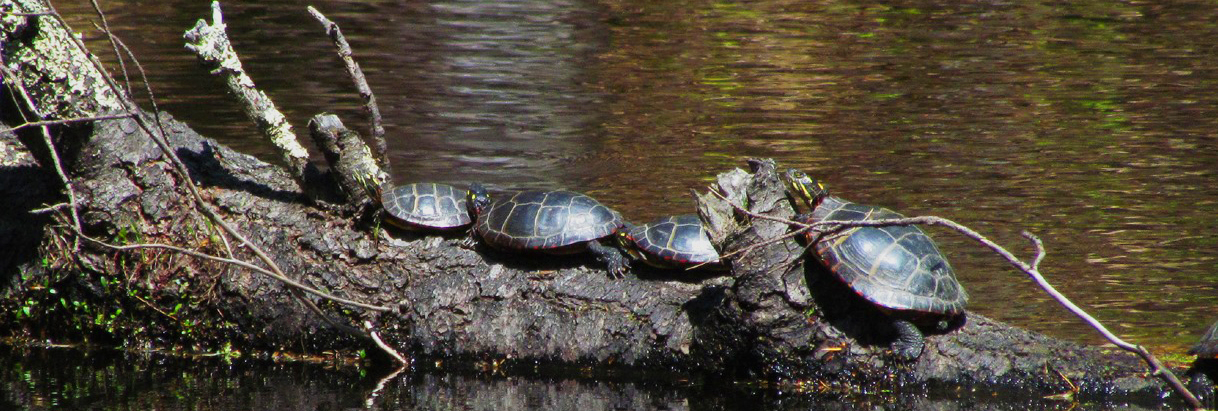JOURNALS
Overview:
Students should have a journal dedicated to this unit for in-class and on-site writing. The journal can be used for free writing, taking notes, drawings, photos, and drafts of creative writing and opinion pieces. Journals can be purchased or homemade and can be decorated by students with river themes.
Learning Objectives:
Students will
• increase their observation and thinking skills through taking notes and responding to new information;
• experience a variety of journal writing styles and ways of writing about nature.
Materials:
purchased or student made journals
Procedure:
When students take a class field trip to the river or go on their own, they should write in their journals about what they see and experience. Students could be assigned to visit the river once a week for a month and write about their visits. They could also visit the river in different seasons and write comparative entries. There are many types of journal entries, ranging from introspective and philosophical entries such as Thoreau's, to scientific observations such as Darwin's. Many artists keep journals that combine drawing with writing. Journal styles, exercises to sharpen sensory perception, and many ideas for writing about nature are included in the "Nature Writing and Journal Keeping" chapter of Literature and the Land, Roux, Enuna Wood (see "Resources"). Some ideas, to be used at various points in the unit, are:
- Pretend to be a drop of water and imagine traveling through the water cycle of precipitation, groundwater, stream, river, ocean, evaporation, and back to a cloud.
- Imagine being a drop of water that begins in the Lamprey's headwaters and travels to the mouth of the river at Great Bay. What happens along the way?
- Imagine being a drop of water that starts at a home; how does it get to the ocean?
- Imagine being an object or creature near or in the river, ex., a rock, tree, or fish. Describe the river from the point of view of that object.
- Read Wallace Stevens's "Thirteen Ways of Being a Blackbird," (see "Resources") then write "Thirteen Ways of Being the Lamprey".
- Write a close-up and long-shot description of the Lamprey. Combine the writing with photographs or drawings.
- Pretend to be a historical character living and working along the river and write a journal entry that might be made at the end of the day. Use as much historical information as possible from reading and research.
- Pretend it is the year 2050. What has happened to the river and its shores? What does the whole watershed look like? Use demographic and land use data and maps to support your view.
- Write a dialogue between a river supporter who advocates the "Wild and Scenic" designation (see "Case Studies", "What Does 'Wild and Scenic' Mean?") and a developer who wants a license for hydropower.
- Write a poem about what you see, hear, smell, and feel at the river.
- Write a haiku poem.
- Find an object connected with the river (a rock, a tree, the river itself) and turn it into a symbol about you or life in general.
- Imagine floating in the water and sensing the connection between your body, the river, and all of the water in the world. This passage from Loren Eiseley's The Immense Journey (1957, Random House: New York) about floating in the Platte River is an excellent follow-up reading.
“You have probably never experienced in yourself the meandering roots of a whole watershed or felt your outstretched fingers touching, by some kind of clairvoyant extension, the brooks of snow-line glaciers at the same time that you were flowing toward the Gulf over the eroded debris of worn-down mountains. Poet MacKnight Black has spoken of being 'limbed...with waters gripping pole and pole...”
I lay back in the floating position that left my face to the sky, and shoved off. The sky wheeled over me. For an instant, as I bobbed into the main channel, I had the sensation of sliding down the vast tilted face of the continent. It was then that I felt the cold needles of the alpine springs at my fingertips, and the warmth of the Gulf pulling me southward. Moving with me, leaving its taste upon my mouth and spouting under me in dancing springs of sand, was the immense body of the continent itself, flowing like the river was flowing, grain by grain, mountain by mountain, down to the sea. I was streaming over ancient sea beds thrust aloft where giant reptiles had once sported; I was wearing down the face of time ... I was water...
...I too was a microcosm of pouring rivulets and floating driftwood...I was three fourths water, rising and subsiding according to the hollow knocking in my veins: a minute pulse like the eternal pulse that lifts Himalayas and which, in the following systole, will carry them away (p.16-20).
Teachers can establish a regular schedule for reading and responding to students' journals and students can also respond to each other's journals. Responses can include questions, points the reader found interesting, or descriptions of similar experiences. Journals can be assessed according to criteria established by the teacher and the class ahead of time, for example, length, effort, regularity of entries, variety, topics covered, etc.. They should be graded only once or twice rather than with every response.

